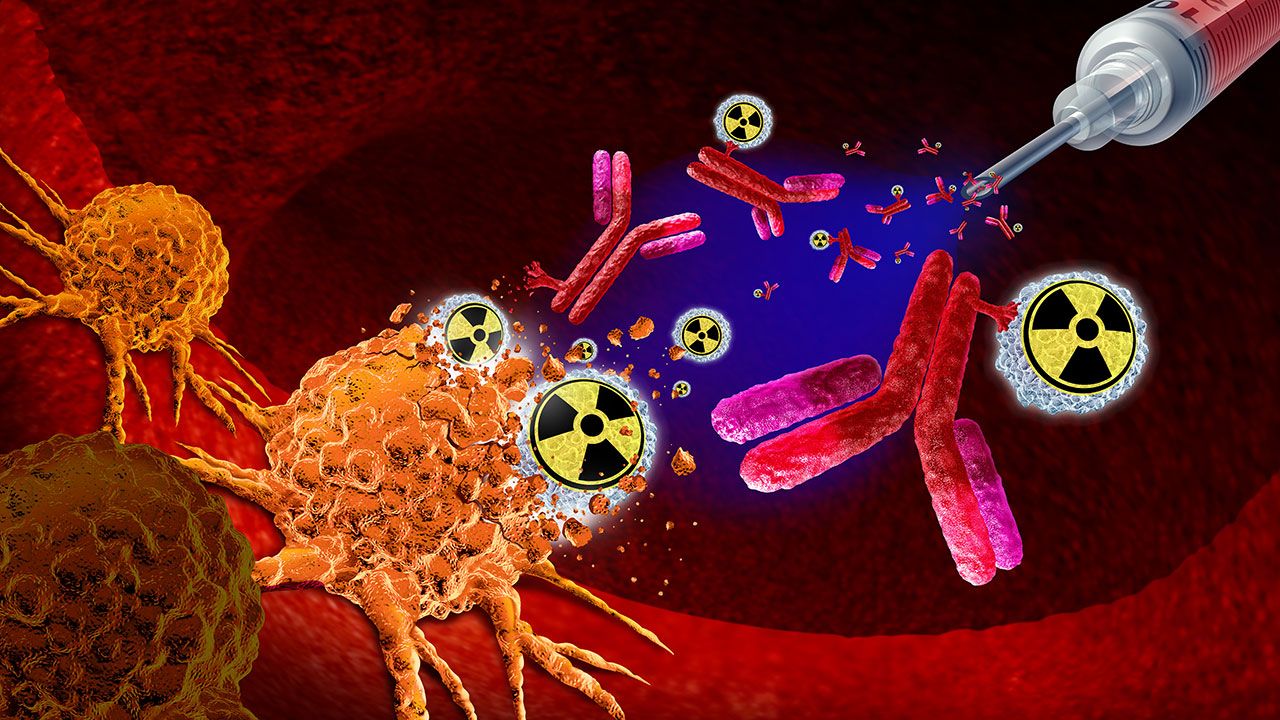Publication
Article
Pharmaceutical Technology
Preparing an Approach to Cold Chain for Cell- and Tissue-Based Therapies
Author(s):
Andrea Zobel, senior director of product management, clinical trial supply, and logistics at PAREXEL International, examines key issues and questions that sponsors and contract partners must address.
Li Wa/shutterstock.com

As more pharmaceutical manufacturers launch clinical research into cell- and tissue-based therapies, they must work more closely with contract research organizations (CROs) and contract development and manufacturing organizations (CDMOs) on logistics and cold-chain planning. Andrea Zobel, senior director of product management, clinical trial supply, and logistics at PAREXEL International, reviews some of the key issues to consider.
Differences with traditional cold chain planning
PharmTech: How is planning for clinical trial logistics for niche innovative or novel/experimental treatments (e.g., immuno-oncological therapies, cell therapies, gene therapies, tissue therapies) different from the process involved for more traditional clinical-trial logistics for biopharmaceuticals or small-molecule drugs?
Zobel: The main differences involved in managing innovative therapies in clinical trials are:
- Limited availability of the trial drug
- Time constraints (e.g., short shelf life or availability only at certain time points after manufacturing)
- Special temperature conditions
- Special transportation requirements
- The challenge of classifying the innovative product correctly in the dangerous goods class and tariff code.
Very often, innovative therapies are developed to treat orphan diseases. Therefore, many countries and sites are required to find the necessary number of patients per protocol. But experienced investigators are also rare and patients may be too disabled or sick to visit the sites regularly, according to the protocol visit schedule.
Early-stage development, an area where innovative companies are often focused, is one of the main challenges for clinical logistics trials. In early development stages, the product availability is limited and researchers must adapt from the research environment to a clinical research setting, which has regulatory, process, and quality requirements.
Therefore, communication about the requirements of the clinical supply chain and the special requirements of the innovative product between the research company, clinical logistics experts, contract manufacturing organizations and CROs is very important. Scientists and logistics experts must find a common language in order to achieve success, and it is often helpful to have an expert with scientific and logistics background on both sides.
PharmTech: How should sponsors and contract partners collaborate at the earliest planning stages? What information/processes should each party be responsible for?
Zobel: The collaboration should, ideally, start at a very early stage of the planning when the contract partners are selected. Selection should take into account the later requirements of the clinical supply chain based on location and capabilities of the contract partners. The whole process should be planned to enable upscaling to the product amounts and characteristics required for larger trials in Phase II to III, and to fulfill the quality requirements for the clinical-trial products.
Formulation, primary and secondary packaging, a suitable product size, and labeling should be designed in a way that enables easy and correct usage at the clinical site, but also fits storage and distribution in the clinical supply chain. The sponsor is responsible for the product, but information about import requirements, especially for the European Union and other countries with similar standards, can be best provided by a contract partner. Finding the best contract partner for each development stage will help the sponsor avoid frequent changes due to requirements not considered in the beginning of the project. Based on the product specifications, the contract partners can develop the supply chain, select the shipping material, plan the process of product pick-up and delivery, identify the storage and shipment vendors in the supply chain, clarify import procedures, and plan the administration material, when that is required.
PharmTech: What issues must be taken into account when managing cold-chain for clinical trials involving novel therapies, and how do those issues affect the choice of temperature-control and other technology, and overall planning?
Zobel: It is very important to provide stability data for the product that reflects the typical temperature conditions required for established shipping material and processes. Sometimes a product starts its development with a temperature range that is suited for a laboratory environment, but that range is not common in logistics.
The clinical supply chain should be designed for the following temperature ranges: - 196 °C with liquid nitrogen, - 80 °C with dry ice, - 15 to - 25 °C for frozen conditions, 2 to 8 °C for refrigerated conditions and 15 to 25 °C for ambient controlled conditions. Stability data should be available for one of these ranges to start the clinical trials without delays.
Maintaining the temperature of deep frozen products is a bottleneck in the clinical supply chain. Large hubs in the United States and Europe often have capabilities for storage and labeling, but it is challenging to find local depots in all countries that offer the required temperature capabilities in a GMP-compliant environment. An increasing demand for clinical research around innovative therapies may motivate depot vendors to establish -20 °C, -80 °C, and liquid nitrogen storage.
As deep frozen material cannot be stored and prepared at each clinical site, but alternative procedures are possible. One example is a process to prepare stem cells and ship them during their shelf life of 48 hours to the clinical sites. In this example, the rate-limiting step is the time from pickup to delivery, but the logistics capabilities of premium couriers can be used, which are in place for time-critical shipments (e.g., blood products and transplants).
Less time critical is the transportation of cells in liquid nitrogen and storage at the clinical site. But for this solution, the site must provide the storage capabilities and tissue culture to be able to thaw and propagate the cells. One possibility to overcome this restriction for the site selection is a patented method to prepare cells in a medium which allows usage immediately after thawing.
Autologous vs. nonautologous approaches
PharmTech: How does the approach differ for autologous vs. non-autologous treatments?
Zobel: Whereas products for non-autologous treatments follow more or less the same processes used for ‘traditional’ clinical logistics, autologous therapies have additional restrictions and requirements. As the parent material for most products, cells or tissues are collected from an individual patient, and the inbound shipment to the manufacturing site is similar to a sample shipment for analytical or transplant purposes.
The ‘dangerous goods’ classifications are applicable in most cases. After preparation of the therapeutic product using GMP-compliant procedures at a GMP-licensed manufacturer, the product must be sent back to the individual patient. Since the material is unique and not replaceable, this procedure requires a tracking system and processes which allow monitoring of the location and condition of the product in all stages of development, avoiding any risk of wrong allocation and damage. The process must be safe to guarantee that the patient who has delivered the cell material gets back the therapeutic product which had been generated out of their donated material.
A very detailed time plan is required. It must take into account the cell donation at the patient’s hospital, the schedule of the manufacturing process at the current good manufacturing practice (cGMP) facility, and the treatment again with the autologous treatment product must be developed.
In the case of the preparation of more than one treatment dosage out of a cell donation, an intermediate storage facility must be identified, with the required storage capabilities in a cGMP-compliant environment.
Ideally a vendor is involved that knows both sides of the development journey, the sample collection chain with all the requirements and logistics challenges, and the clinical drug supply chain. With this combination, autologous therapies can be well supported.
Global regulations covering new technologies
PharmTech: What special temperature control, storage, and transportation options are required for these advanced therapies?
Zobel: The temperature-control requirements are not different from those of other clinical products, but other classifications could be applicable, depending on the nature of the product that is involved. For example, therapies using genetically modified organisms (GMOs) could require the respective dangerous goods classification (e.g., United Nations [UN] 3245 for air freight).
Some countries requiring specific documents for import and storage locations could need a license for storage of these materials. At the moment, only one gene-therapy product is approved and only a small number of clinical trials are ongoing that use genetically modified organisms (GMOs). The majority of transported GMOs are for research and agriculture, so a mix-up of these products with investigational medicinal products containing a GMO must be avoided, and the correct classification according to the country regulations must be applied.
Potential role for direct-to-patient logistics?
PharmTech: Some clinical-trial materials are now delivered directly to patients’ homes. Do you see that approach being used in the future for these types of materials, and how would that complicate the overall process?
Zobel: There are two reasons why direct-to-patient home deliveries of advanced therapies could be required: the inability of the patient to regularly visit the clinical site; and the lack of clinical sites with experienced investigators for a rare disease in the proximity of the patients.
Some research companies fly patients to the treatment sites for visits, but the alternative is applying the therapy at home. For home treatments, a nurse as well as home deliveries and pick-ups of samples and unused materials are required to provide the patient the appropriate treatment and diagnostics.
In the case of the preparation of more than one treatment dosage out of a cell donation, an intermediate storage facility must be identified, with the required storage capabilities in a cGMP-compliant environment.
One important challenge is the data privacy of the patient in a clinical trial. The logistics process should give the provider the patient’s home address, but the data must be kept separate from the clinical trial data that is available for the CRO and the sponsor.
For these purposes, systems like Interactive Response Technology and Electronic Data Capture must be adapted and secure areas developed where the data could be collected and provided to the transportation vendor. All three parties, home care, the logistics vendor, and the patient need close cooperation and careful planning to schedule all deliveries and pick-ups.
Another challenge is the delivery from the clinical site pharmacy or depot to the patients’ homes. Nearly all countries require a pharmacist for drug dispensing, but in some countries, a pharmacy license is not available for a depot. So mainly the clinical site pharmacies are the main partners for home deliveries.
Also not all materials and treatments are possible at a patient’s home. Storage conditions could be critical. For these purposes, logistics providers offer special refrigerators to allow controlled and safe storage of temperature-critical products at the patient’s home. That approach could be more difficult, however, for other types of products (e.g., a GMO product that, for environmental reasons, requires the collection of contaminated material).
Article Details
Pharmaceutical Technology
Vol. 41, No. 2
Supplement
February 2017
Pages: s8-s12
Citation
When referring to this article, please cite it as A. Shanley, “Preparing an Approach to Cold Chain for Cell- and Tissue-Based Therapies," Supplement to Pharmaceutical Technology 41 (2) February 2017.

Newsletter
Get the essential updates shaping the future of pharma manufacturing and compliance—subscribe today to Pharmaceutical Technology and never miss a breakthrough.





